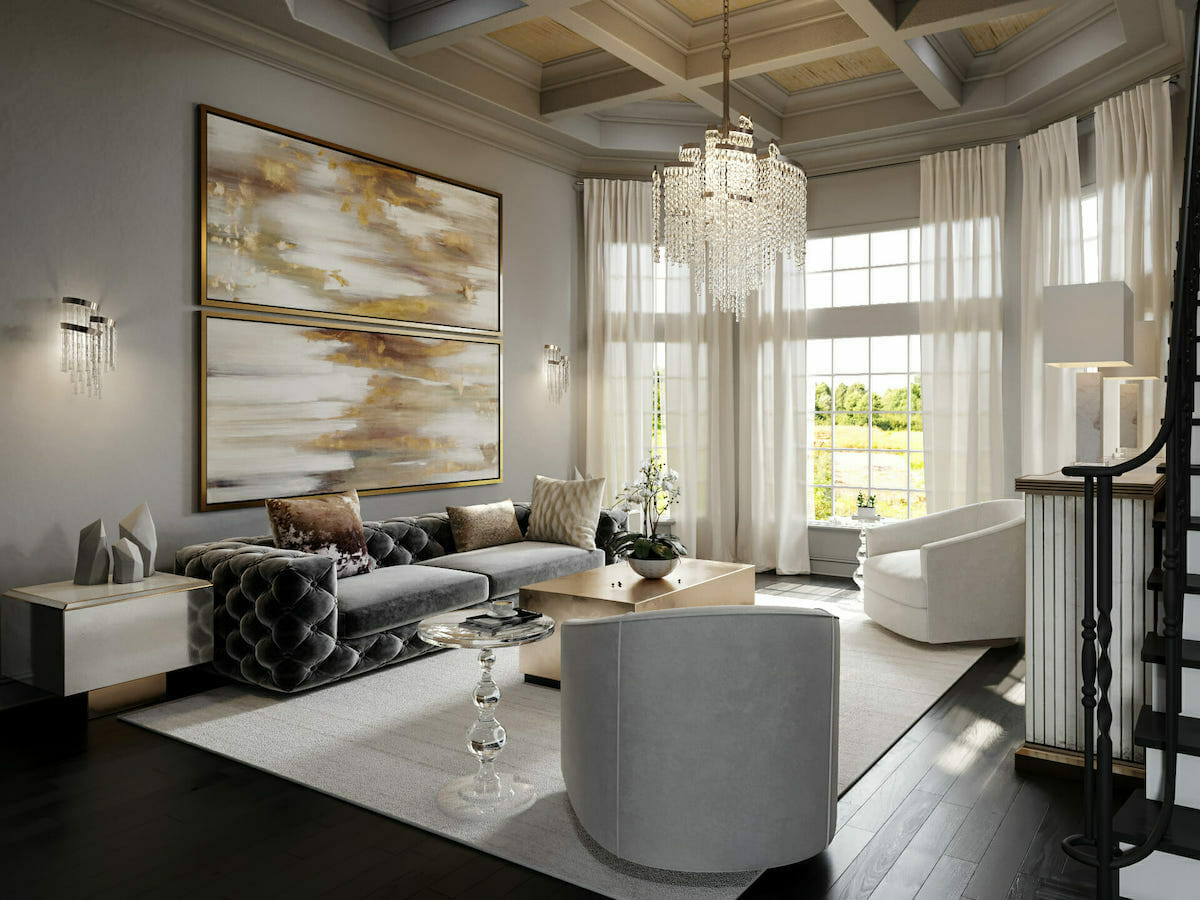Interior Design Services

Interior design services provided remotely encompass a comprehensive range of offerings that cater to diverse client needs. From conceptualization and space planning to furniture selection and project management, remote interior designers leverage technology to deliver exceptional design solutions.
Benefits of Hiring a Remote Interior Designer
Remote interior designers offer several advantages that make them an attractive choice for homeowners and businesses alike:
- Flexibility: Remote designers provide flexible scheduling options, allowing clients to collaborate with them at their convenience.
- Cost-effectiveness: Remote services often come with lower overhead costs, which can translate into savings for clients.
- Access to a Wider Pool of Talent: Remote work opens up access to a global pool of talented interior designers, expanding the options available to clients.
Successful Remote Interior Design Projects
Numerous successful remote interior design projects have demonstrated the effectiveness of this approach. For instance, a remote designer transformed a cramped living room into a spacious and inviting oasis, maximizing natural light and creating a seamless flow of space. Another project involved the remote redesign of a corporate office, resulting in a modern and functional workspace that fostered collaboration and productivity.
Process of Working with a Remote Interior Designer

Working with a remote interior designer involves a collaborative process that begins with an initial consultation and extends through project completion. Effective communication and clear expectations are crucial for a successful outcome.
Initial Consultation
The initial consultation sets the foundation for the project. During this meeting, the client and designer discuss the project scope, budget, timeline, and design preferences. The designer gathers information about the client’s lifestyle, needs, and aspirations for the space.
Design Development
Based on the initial consultation, the designer develops a design concept that meets the client’s requirements. This concept includes floor plans, mood boards, and material selections. The client provides feedback and revisions until a final design is agreed upon.
Communication and Collaboration
Remote interior designers rely on various communication tools and technologies to collaborate with clients. These include email, video conferencing, online project management platforms, and messaging apps. Effective communication ensures that both parties are on the same page throughout the project.
Establishing Clear Expectations and Timelines
Establishing clear expectations and timelines is essential for a smooth working relationship. The designer and client should agree on deadlines for design deliverables, project milestones, and budget approvals. This helps prevent misunderstandings and ensures that the project progresses according to plan.
Project Management
The designer manages the project from start to finish, coordinating with contractors, suppliers, and the client. They track progress, resolve issues, and ensure that the project is completed on time and within budget.
Finalization and Handover
Once the project is complete, the designer conducts a final walkthrough with the client to ensure satisfaction. The client receives all necessary documentation, including design plans, material specifications, and maintenance instructions.
Design Concepts and Trends: Remote Interior Designer

Remote interior designer – Creating a functional and aesthetically pleasing home office environment is crucial for remote workers. By incorporating current design concepts and trends, you can optimize your workspace for productivity and well-being.
Incorporating Ergonomic Principles, Remote interior designer
Ergonomics plays a vital role in remote interior design. Proper furniture, lighting, and accessories can prevent physical discomfort and improve overall health. Consider adjustable desks, ergonomic chairs, and natural lighting to create a comfortable and supportive work environment.
- Adjustable desks allow you to alternate between sitting and standing positions, reducing strain on your back and neck.
- Ergonomic chairs provide proper lumbar support and adjustability, minimizing fatigue and discomfort during prolonged sitting.
- Natural lighting reduces eye strain and improves overall well-being. Position your desk near a window or use full-spectrum lighting.
Maximizing Functionality
A well-organized and functional home office enhances productivity and reduces distractions. Utilize storage solutions, such as shelves, drawers, and cabinets, to keep your workspace clutter-free. Consider multi-purpose furniture, such as a desk with built-in storage, to maximize space.
- Vertical storage, such as shelves and wall-mounted organizers, saves floor space and keeps essential items within easy reach.
- Multi-purpose furniture, such as a desk with drawers or a storage ottoman, combines functionality with aesthetics.
- Decluttering regularly helps maintain a clean and organized workspace, reducing distractions and improving focus.
Creating a Personal and Inspiring Environment
Your home office should reflect your personal style and inspire creativity. Incorporate colors, patterns, and artwork that uplift your mood and make you feel comfortable. Add plants to bring life and freshness to your workspace.
- Choose a color scheme that aligns with your preferences and promotes productivity. For example, blue hues can create a calming and focused atmosphere.
- Add personal touches, such as photos, artwork, or plants, to make your workspace feel inviting and inspiring.
- Incorporate natural elements, such as wood, stone, or plants, to create a sense of warmth and connection to nature.